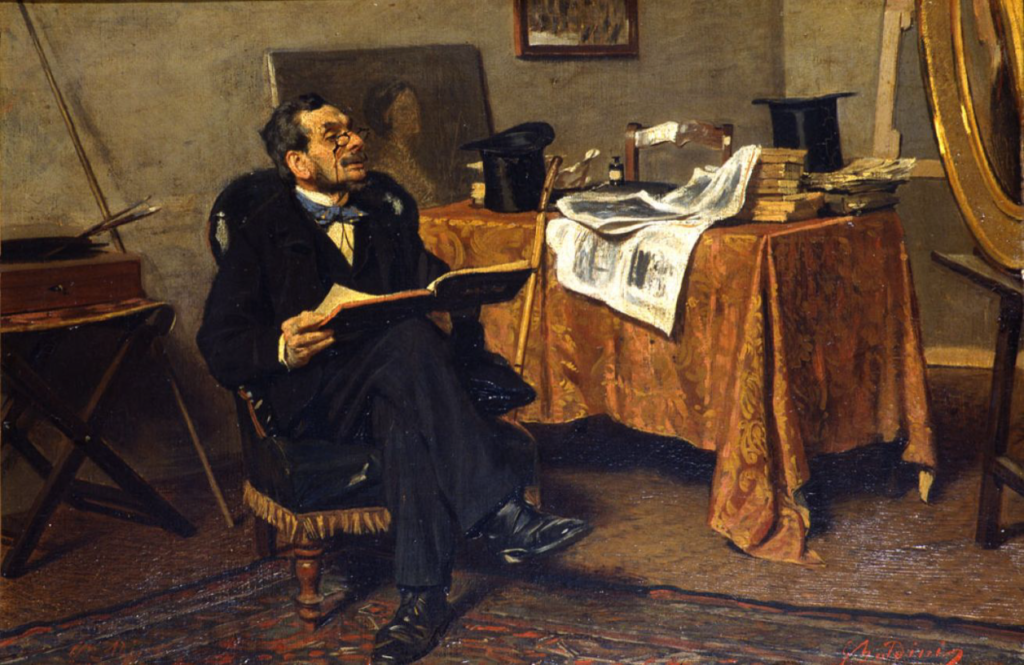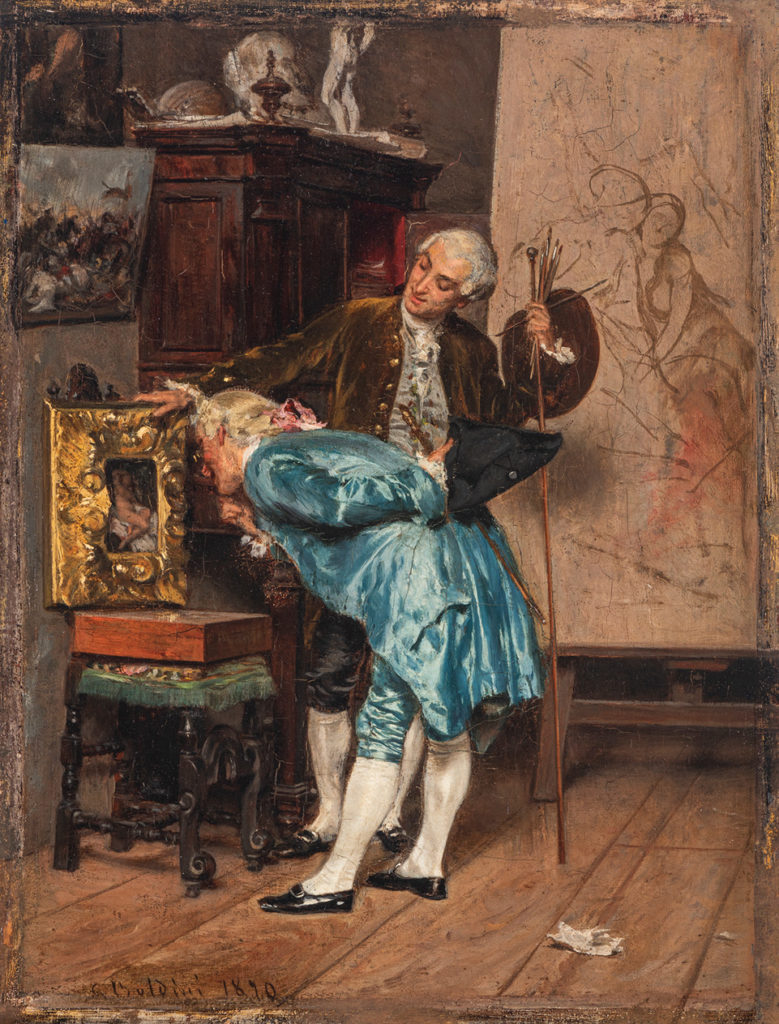PROFESSION: MUSEOLOGIST
by Roberto Concas
Photo Credits: Alexandre Jean-Baptiste Brun, Salon Carré Louvre, 1880, Musee de Louvre.
LET’S MAKE A MUSEUM!
In the presence of a derelict building, better if of historical or cultural value, the choice of creating a museum becomes winning, transversal in consensus, accommodating, reassuring, bipartisan, in practice a downhill route.
The real problems come next, right away!!!!
That decision taken with enthusiasm, which has silenced even the doubters, can prove to be full of problems, complex, very expensive and even unsuccessful!
Often it is decided to create a museum in an architecture that should instead be “museumized“, meaning that making it a museum, adapting it, may not be the right solution, indeed harmful.
Some of these museums wait at least three or four decades before reaching a solution, others lose their original destination to become a less significant “multi-purpose space”, others get stuck on the various security clearance, CPI (fire prevention certificate), habitability, superintendence, anti-seismic regulations and more until they realize, at the end of the works, the poor supply of electricity due to the absence of a medium voltage booth at short distance.
This is as far as the technical aspects are concerned, to which are grafted those that can be defined as cultural and scientific, where there is no lack of “pointers”, sophisms, nuances of attribution and dating, afterthoughts, the selection of the most representative works, the museum order and more.
In addition, there are also the profiles of merit, ownership, rights, loan conditions, state and private property, concessions, donations, bequests with clauses attached to perpetual existence and interpretation!
All of this is not enough, if the museum wanted to host exhibitions of high value, insurance problems would arise, of policies that splash in prices, with the risk coefficients on the premises, surveillance systems, alarms, fire extinguishing, distances from rescue centres and police.
Of course, building a museum is a big problem!

THE MUSEOLOGIST
All this does not mean that it is impossible to create a museum, but it does mean that a method and the participation of professional figures such as the MUSEOLOGIST, a figure partly new and with mostly unpublished tasks, is necessary.
The MUSEOLOGIST is responsible for putting everything in order and much more, while remaining in the due and absolute respect of all the other professionals who will have to intervene for the realization of a museum.
The museologist must be the coordinator of the “museum project” without replacing other professionals or the same client, in some aspects he is almost like a conductor who must “build” the work in harmony and with many protagonists and also with the “first women” who can become great interpreters of museum needs.
Dialogue as well as decision, are among the individual characteristics of a museologist, knowing that what counts is the achievement of the objectives, must therefore be able to highlight and transfer, to all those who will intervene in the work, the true intent of the museum, the mission, the philosophy, to the point of hypothesizing the life within it both operators and visitors.
BUT WHAT IS HE NOT… A MUSEOLOGIST?
The museologist is not a museum historian, but surely he must know all the main events and the historical, cultural and technical methodological excursus.
The museologist is not a designer of architecture, security, air conditioning, lighting technology, installations, but he must be able to deal with them and therefore be able to read and discuss all possible architectural, structural, plant engineering, technological projects together with metric calculations and chronoprograms.
A museologist is not an architect or engineer, but must know that a museum designed architecturally and carefully designed will bring great benefits in future management, for example in being able to clean spaces, without narrow corners or corridors, with machines that vacuum, wash and sanitize, optimizing costs. This applies to self-ventilated walls, low-emission glass, general insulation, renewable sources, microclimate.
The museologist is not the museum’s curator or specialist scientific consultant, but must be able to dialogue with experts and know the methods of research, study, communication and dissemination, in order to establish the necessary economic and technological contributions up to the final editing.
The museologist is not a computer scientist or an expert in three-dimensional modeling, but of matter and technology, he or she needs to know in depth the potential, functionality, costs and real impact for the museum. They are innovative tools of great fascination but they become obsolete or go out of “fashion” in a very short time, they are also expensive.
A museologist is not a team manager or a human resources manager, but must think about architectural spaces, technologies, logistics, functioning, quality and healthiness of life of the operators and give indications in this sense.
The museologist is not a music expert, but he can direct the museum towards music!
The museologist is not a social media manager but he or she must certainly know the potential and dynamics of its functioning, as well as the costs of organization and maintenance over time.

SAFETY AND WELL-BEING
The museologist does not take care of the security shifts in the museum, but must think about the welfare of the staff.
A security officer cannot spend too many hours in front of a surveillance monitor without a change, a diversification of work, a view of the outside sunlight, life in the museum rooms.
The image of a caretaker “anchored” to a chair or trawling through the halls, unfortunately, is still in widespread collective memory, despite the commitment of all. Perhaps an information and control station, also intended as an elegant sitting room with an illustration and in-depth desk, together with a comfortable armchair in compliance with standards, could relieve a shift and offer a better service.
The museologist is not the expert in educational and reception services, however, and once again he or she must be well acquainted with the dynamics of the services, the target audience, the methods and quantity of delivery. This is even more true for issues related to permanent disabilities as temporary, including those of staff.
THE MUSEOLOGIST, FIRST OF ALL, IS NOT!
The list could go for many other items concerning a museum, always defining the boundary of competences, roles, responsibilities, but also knowing that there is a precise direction, discussed, evaluated, verified and compared during the work, which the museologist interprets for the necessary time.
The museologist will not necessarily become the museum director, but he or she could direct the museum system if it exists, or work for the positioning of the museum in the territorial, national or international offer.
The finished museologist will leave room for the various professions of the museum, director in the lead, to face new challenges and new museums.





